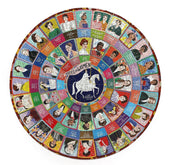A new bill, already passed by the House, the SAVE Act (HR 22), would require every American registering to vote in federal elections to present proof of U.S. citizenship. That sounds simple. But for millions of citizens, it isn’t.
What’s the problem?
Most driver’s licenses don’t prove citizenship. Passports do—but only about half of Americans have one. And the law would require your documents to match exactly, which means if your name has changed—due to marriage, divorce, or any other reason—you could be blocked from registering unless you can produce hard-to-obtain paperwork that the law doesn’t clearly define. The documentation necessary to sort out any discrepancy is not specified in the bill and is left to the states to establish.
Who’s at risk?
• Women: 83% of women change their names when they marry. That’s 69 million Americans who may not have ID that matches their birth certificate.
• Lower-income Americans: Only 1 in 5 citizens earning under $50,000 have a valid passport. The Brennan Center for Justice estimates that over 21.3 million citizens, or 9% of the population, do not have proof of citizenship readily available.
•Voters who rely on mail and online registration: The bill would eliminate or drastically change these systems.
Why does it matter?
Non-citizen voting is extremely rare. In 2016, there were just 30 suspected cases out of 23.5 million votes in key immigrant-heavy areas—about 0.0001%. Yet this bill could block or deter millions of eligible citizens from participating in our democracy.
Take action.
Write and call your Senators. Speak up. Civic participation starts with awareness.
Find Your State Representative
Need Help Contacting Your Officials?
5 Calls is a non-profit organization that provides you with contact information as well as suggested scripts on particular issues.
Resist Bot is a chatbot that turns your texts into faxes, postal mail, or emails to your representatives in minutes.













